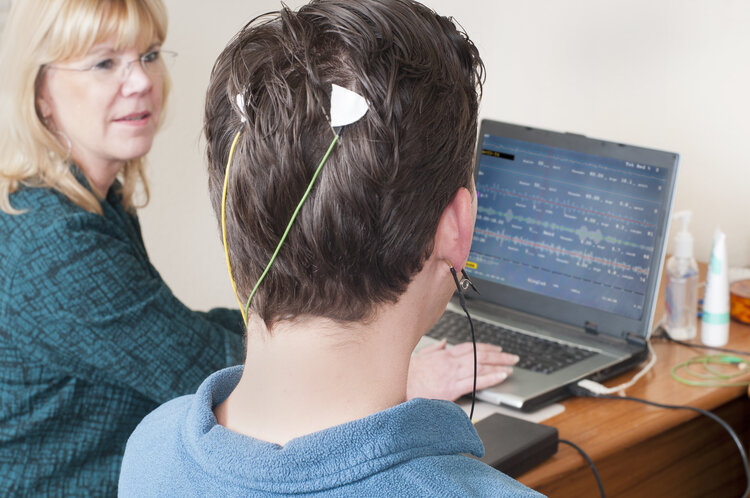Neurofeedback

Before our 10 year old son began Neurofeedback, we could barely have a conversation without him losing focus, getting frustrated and angry which, then, resulted in him getting down on himself. Since Jay has begun this program, we have seen a dramatic change. We are now able to have peaceful, meaningful, lengthy conversations about almost anything! In addition, Jay has struggled with homework since kindergarten because of his difficulty staying focused on it and he lacked confidence in his ability to do it without becoming frustrated. Now, Jay is able to stay focused and he takes pride in his work and his accomplishments. Most importantly, when Jay feels he is having trouble, he is able to ask for help. I have seen such major strides in the past few months and our home is filled with more joy than we ever imagined was possible! (Too bad it doesn’t help stop bothering his sister!)
Donna F. of Woodland Park, NJ
Neurofeedback
Brain activity is a concerted effort – meaning our various brain functions work together, literally “in concert,” all the time. When we perform various tasks, specific areas of the brain “fire up” and become engaged with other areas. If that engagement is not in sync – that is, if even one area is “off” – the brain loses its ability to process information effectively or respond to the task at hand.
Neurofeedback is an effective tool to recreate harmony in our brain activity, assisting in the treatment of symptoms associated with ADHD, ASD, Depression, Anxiety, as well as other problems. At Therapeutic Options, the two types of Neurofeedback we use are Brainwave and pIR HEG.
Initial Assessment
In preparing a person’s Neurofeedback protocol, we consider developmental history, a review of current symptoms, and the goals of the individual. In most cases, we may also use an assessment tool called a Quantitative EEG. QEEG is a brain mapping technique, like an MRI or PET scan, which illustrates electrical activity throughout the brain and focuses on connectivity - how different parts of the brain are communicating with one another. For the purposes of Brainwave Neurofeedback, it shows us where to “train the brain.” A QEEG session involves little more than sitting in a comfortable chair and wearing a cap with attached electrodes. We then record the electrical activity of your brain, 10 minutes with your eyes open and 10 minutes with your eyes closed - this is done right in our office.
Brainwave Neurofeedback
Brainwave Neurofeedback is a training technique that presents the user with feedback so he or she can establish more control over brainwave activity and its corresponding behaviors, moods and mental states. Brain science has shown that repetitive exercise of brain networks results in an actual change in the brain (neuroplasticity). Based on the idea that the brain can correct and balance itself when given the right opportunity, Brainwave Neurofeedback allows you to address a core neurological problem by monitoring the activity in your brain.
During a Brainwave Neurofeedback session, we affix sensors to the scalp to transmit brainwave data to a computer. The computer then translates the information into a series of constantly changing graphs and “video game” displays. If brain activity moves in a desired direction, the person is “rewarded” with visual and auditory cues in the game. This real-time feedback allows someone to learn what it feels like to produce specific, desirable brainwaves. In fact, brain activity feedback is provided every half second. This means that over the course of a session, you get over 1,500 chances to “learn.” That’s a lot of repetitive exercise.
Click here to see articles on neurofeedback
Who Can Benefit From Neurofeedback?
While Neurofeedback is not always indicated for everyone, we have used it to ameliorate many problems for the vast majority of our clients. Current research supports the use of Neurofeedback in the treatment of, among other things:
- Anxiety
- Symptoms of Autism Spectrum Disorders
- Behavior Problems
- Depression
- Developmental Delay
- Executive Function Problems
- Hyperactivity
- Impulsivity
- Learning Problems
- Seizure Disorders
- Sleep Problems
- Social Difficulties
